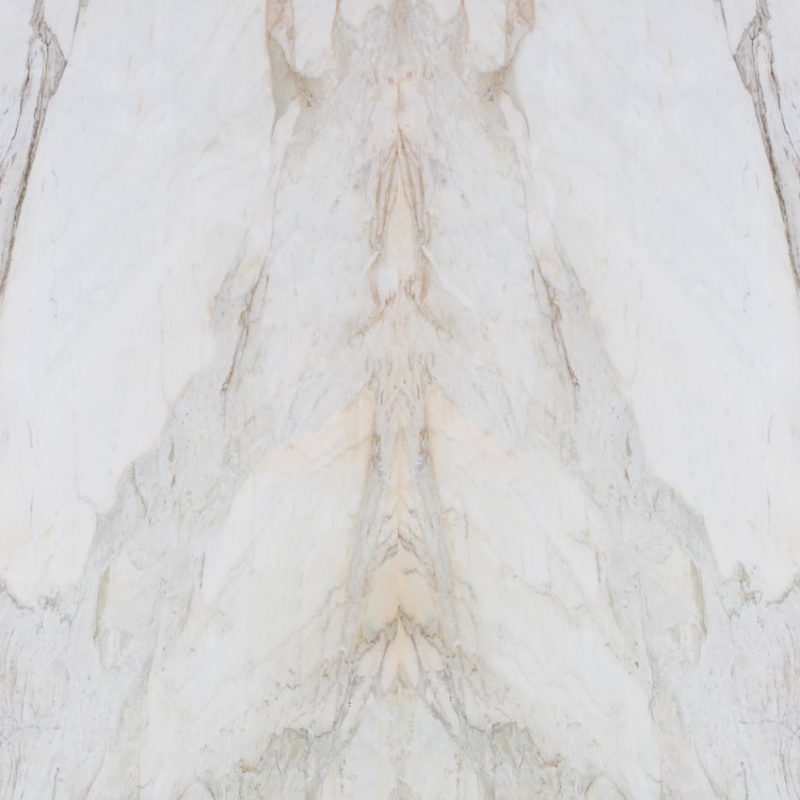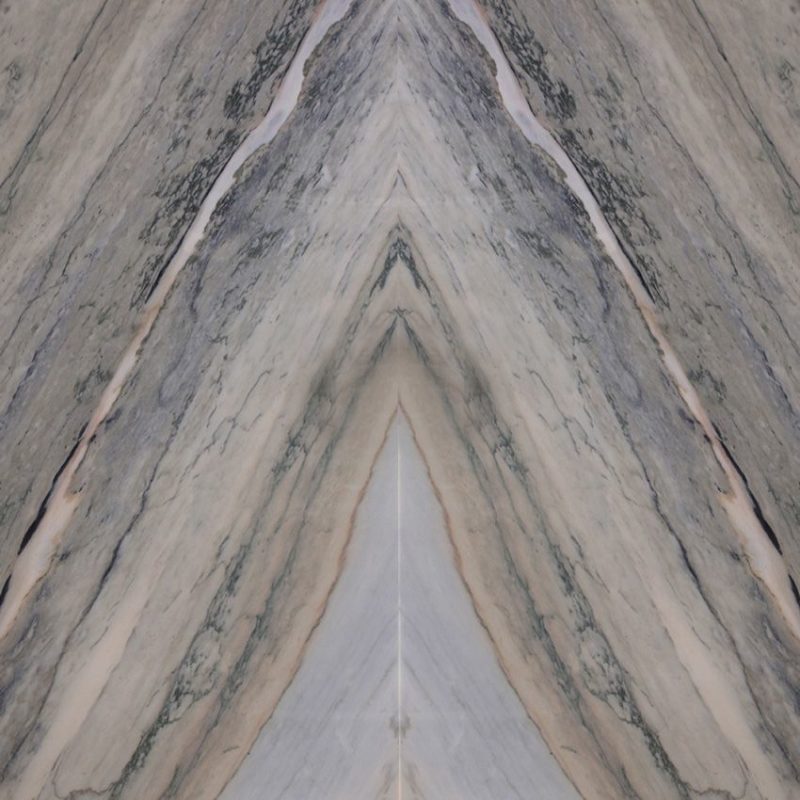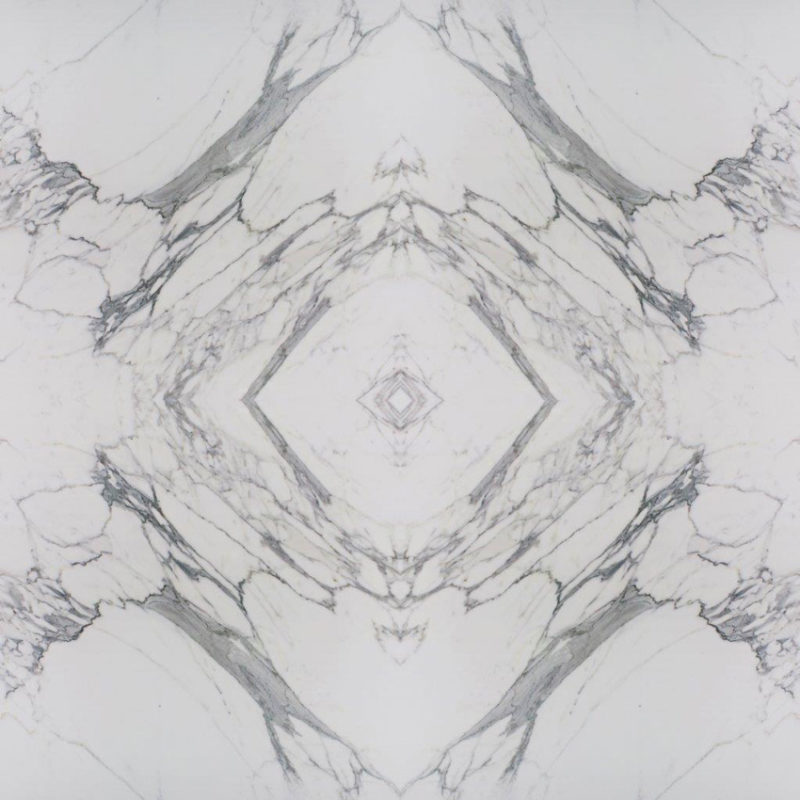Trends reflect people’s tastes and discoveries of new designs. So, let’s reflect on that for the next few minutes with a look at one trend, particularly in marble surfaces, that literally reflects… book and quartermatching.
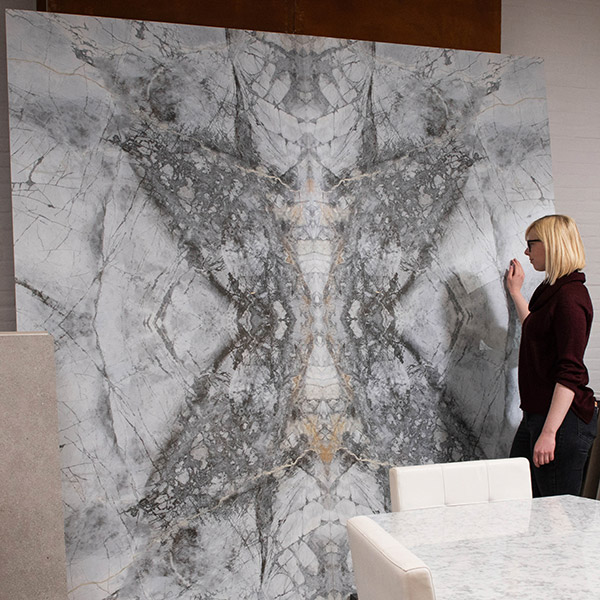
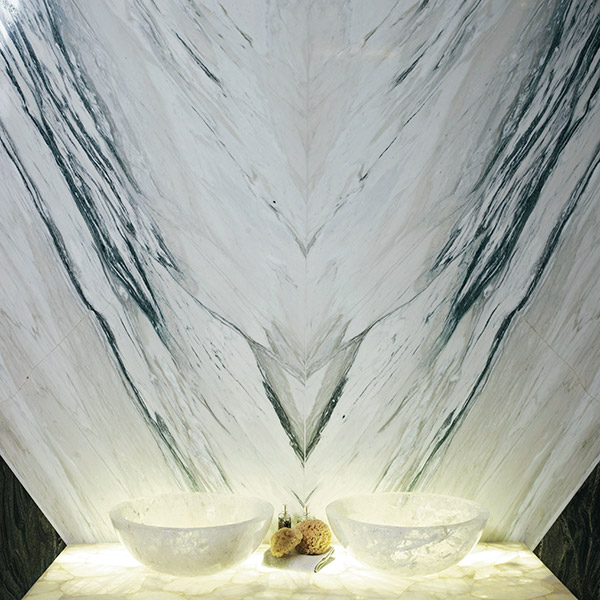
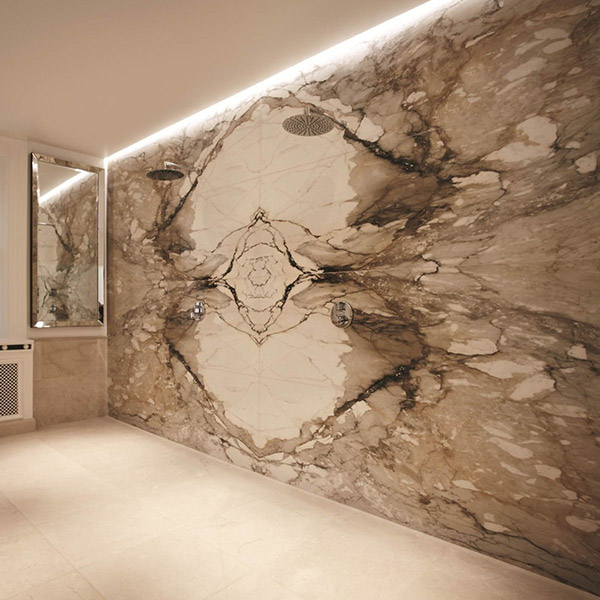
What is bookmatched marble?
Bookmatching is traditionally where marble slabs are cut from the same block and are then positioned side-by-side to create a mirror image. It is called ‘bookmatched’ because the end result is reminiscent of an open book.
As marble is a natural material the patterns, or veins, in the stone vary uniquely. Even marbles sourced from the same quarry can be wildly different. These natural nuances are what make the process of bookmatching so interesting.
Designers love using the bookmatching technique to create stunning and genuinely unique feature walls and floors. A stunning example (featured above centre) uses a dramatically veined Calacatta Ondulato marble.
Making a Statement
At Lapicida, we are renowned for producing feature walls using bookmatched or quartermatched marble slabs. Stunning statement walls for bathrooms and kitchens in private residences are regular requests. Also, gaining popularity are bookmatched walls in living areas, especially where a homeowner is looking to add interest or glamour to an otherwise simple space.
We are also experiencing an increasing demand for bookmatched feature walls and floors for commercial projects, too. These can work really effectively in an entrance or reception area.
What is quartermatched (quadmatched) marble?
This is a similar process to bookmatching that utilises four slabs rather than two, hence, quartermatching. In our experience, the size of the slab often dictates whether we would use a particular piece of marble to create a bookmatch or quartermatch wall or floor. The veining plays a big part too, as this can look fabulous when quartermatched. Aesthetically, some stones are especially effective when quartermatching, such as San Marino Venato marble.
So, which marbles are the best ones to use for bookmatching purposes? “Intricate veined marbles such as Calacatta Delicato, San Marino and Statuario work well. The highest-grade stone with a pronounced ‘grain’ or ‘veins’ are best,” says Jason Cherrington, Director of Lapicida. “However other stones such as quartzite produce wonderful results, too.”
Not Exclusively Marble
The very nature of bookmatching means that the end results can be costly to achieve. But with technological advances in the stone and tile market, we are seeing some fantastic bookmatched marble-effect porcelain tiles.
Meet Your Matches
Lapicida stocks a number of products at varying price points, which are available in bookmatch or quartermatch options.
San Marino Classic Bookmatch is a popular white marble, incorporating a variety of colours through the veining from greys and blacks to rusty browns.
San Marino Venato Bookmatch is a variation on San Marino Classic marble. Its colours are similar greys to rusty browns, however, its veining is more linear and contemporary.
Calacatta Oro Bookmatch marble (featured above right) has beautiful veining detail that ranges from gold through grey to inky blue and is available in a honed or polished finish.
Calacatta Quartermatch is a real statement tile. This classic marble has wonderful grey veining with subtle green and brown hints and has a polished finish.
Classic Quartermatch Statuario is one of the most well know white marbles with grey veining. It is available in either polished, honed or brushed finish.
Interested in bookmatched or quartermatched surfaces? Want to discuss either with a Lapicida expert? Simply contact Lapicida on +44 (0)1423 400 100 or email enquiries@lapicida.com.


